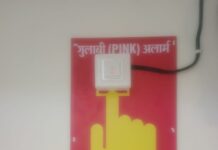
The Prime Minister of india Mr. Narendra Modi wants 99% of goods and services to reduction within the 18% slab of tax rate, or lower. Why must anyone quibble with this statement, which would ostensibly mean that many goods and services which now attract a higher tax rate would fall within the lower rate? Well, for one, the Goods and Services (GST) regime started out by being a multi-slab laborious process and earlier calls to simplify it were met with ridicule by the PM and his men. So an abrupt change in stance, which the Congress is calling ‘doublespeak’, invites comment.
And Secondly, this noble wish to bring down tax on many items comes just when a difficult election is round the corner, right after the BJP lost out in three key Hindi heartland states and populism triumphing over pragmatism cannot be ruled out. Besides, it is not for the PM to impose his wish in this matter, as state representatives comprising the GST Council have the last word on GST rates.
And third, lowering tax rates on more items will have fiscal implications, at least in the short to medium term, as overall collections will dip. Some estimates peg loss to the Centre though rate rationalisation at anywhere between Rs 3000-3500 crore. Remember, earlier this year, the government had paused rate cuts after concerns emerged over lower-than-anticipated GST collections.
The announcement by the PM in the same week as the scheduled meeting of the GST Council (slated for Saturday), merely shows why this could be a game of one-upmanship – the Congress has announced farm loan waivers in the three states it wrested power in and the ruling dispensation probably did not want to be seen lagging in populism hence the GST largesse.
Both the actions, loan waivers as well as pruning GST rates, have fiscal implications but no one seems worried on this count, at least for now.
When the GST regime was first implemented in July last year, the government had opted for six rate slabs – zero, 5%, 12%, 18% and 28% and 28% plus cess for luxury goods. In addition, bullion was to attract 3% GST. The cess on luxury goods was to be used to compensate states for any revenue loss incurred due to GST implementation for five years beginning July 2017. And both, central and state, governments were to have a share in tax collections.
At the time of implementation too, experts and the opposition had warned against having multiple tax rates, which they said ran contrary to the much touted motto of ‘one nation, one tax’. But the government went ahead with this multiple rate structure, opting to rationalize the slabs as months rolled by. In fact, in July the Prime Minister had mocked the opposition for seeking a single GST rate, saying milk and Mercedes (luxury car) cannot be taxed at the same rate and food items cannot be taxed at the same rate at which luxury goods are taxed.
Ironically, shortly after that in July itself, the GST Council agreed to a major rate rationalisation and a host of durables such as washing machines, refrigerators, TVs, water coolers and electric iron, paints etc were brought under the 18% slab from 28% earlier.
The council also waived tax altogether on some items such as sanitary napkins. This decision was hailed all round as it lead to slight dip in retail prices of some goods but it also fuelled a shortfall in revenue collections by Rs 10,000 crore.
And since the beginning of 2018-19, even though month-wise GST collections have been better over the last fiscal, they remain short of target of Rs 1-1.2 lakh crore. According to this reply in Rajya Sabha by MoS Shiv Pratap Shukla on December 11, Rs 97,039.625 crore have been collected by the government through GST between April and November this year. Only in two months, April and October, have collections crossed the Rs 1 lakh crore mark.
Not just worries over inadequate GST collections, the government could also face another problem: with three states being won by the Congress, the opposition numbers in the GST Council could now hold off any resolution by the government and other BJP state reps. So unless there is a consensus on bringing more items in the lower tax slab, the PM’s wish may remain just that – a wish.
GST has been seen as one of the major reasons for disruption of small businesses and livelihood of the common man over the last 18 months alongside demonetisation. Though the government has shrugged off its ill effects, there is palpable anger among the medium and small enterprises which may be driving the ruling party to offer yet more sops. And with experts now saying that the GST collections till November have been only about half of the indirect tax target for the fiscal, achieving the full year target may be quite difficult. The government’s haste in seeking a reduction on rates for more items may wreck its fiscal math. But who cares for fiscal math when elections are to be won?


